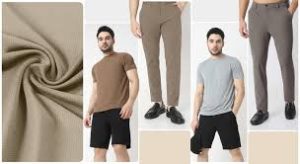What is Moisture Management Fabric? Why It Matters for Comfort and Performance
If you’ve ever gone for a run in a cotton T-shirt and ended up soaked, cold, and uncomfortable, you’ve experienced what happens when fabric doesn’t manage moisture properly. That’s where moisture management fabric comes in—a game-changer in both activewear and everyday clothing.
Understanding Moisture Management
Moisture management refers to a fabric’s ability to wick sweat away from your skin, move it to the outer layer of the garment, and allow it to evaporate quickly. This keeps you dry, comfortable, and better regulated in terms of body temperature—whether you’re working out, working outdoors, or simply running errands on a hot day.
Unlike traditional cotton—which absorbs sweat and holds onto it—moisture-wicking fabrics are designed to push that moisture away from your body. This is especially important for athletes, outdoor workers, or anyone wearing garments for extended periods in warm or humid environments.
How Moisture-Wicking Fabrics Work
Moisture-wicking fabrics are usually made from synthetic fibers like polyester, nylon, or spandex. These materials are engineered to be:
-
Hydrophobic (they repel water)
-
Lightweight and breathable
-
Quick-drying
-
Often treated with antimicrobial finishes to reduce odor
Some advanced fabrics even have dual-layer construction, where the inner layer pulls moisture from your skin, and the outer layer disperses it across the surface to dry faster.
Applications Beyond the Gym
While moisture management fabric is most commonly found in athletic wear, it’s also widely used in:
-
Workwear for construction or industrial jobs
-
Military uniforms
-
Undergarments
-
Outdoor clothing for hiking, camping, or biking
-
Even bedsheets and pillowcases in hot climates
Moisture-wicking textiles are also increasingly popular in sustainable fashion, with brands incorporating recycled polyester or bamboo fibers to reduce environmental impact.
Benefits You’ll Actually Feel
The benefits go far beyond staying dry:
-
Improved comfort: You don’t feel sticky or soaked.
-
Better performance: Athletes can train longer and harder.
-
Temperature regulation: Sweat evaporates, keeping your skin cooler.
-
Hygiene: Less moisture means fewer bacteria and odors.
Conclusion
Moisture management fabrics are no longer a luxury—they’re a necessity in today’s active, performance-driven lifestyles. Whether you’re hitting the gym, heading to work, or just want to stay comfortable during a hot summer day, choosing the right fabric makes a big difference.
So next time you’re shopping for clothes, check those labels. Look for materials labeled as “moisture-wicking,” “quick-dry,” or “performance fabric.” Your body (and your laundry routine) click here
FAQ: Moisture Management Fabric
1. Is moisture-wicking the same as waterproof?
No. Moisture-wicking fabrics pull sweat away from the body but are not waterproof. Waterproof fabrics block all water but may trap heat and sweat.
2. What are the best materials for moisture management?
Polyester, nylon, bamboo, and certain treated cotton blends are most commonly used for moisture-wicking properties.
3. Do moisture-wicking clothes smell less?
Yes. Many are treated with antimicrobial finishes that reduce odor-causing bacteria. However, odor resistance can decrease over time with repeated washing.
4. Can I wear moisture-wicking fabric every day?
Absolutely. Many everyday clothes—including underwear, t-shirts, and socks—now include moisture-wicking technology for all-day comfort.




